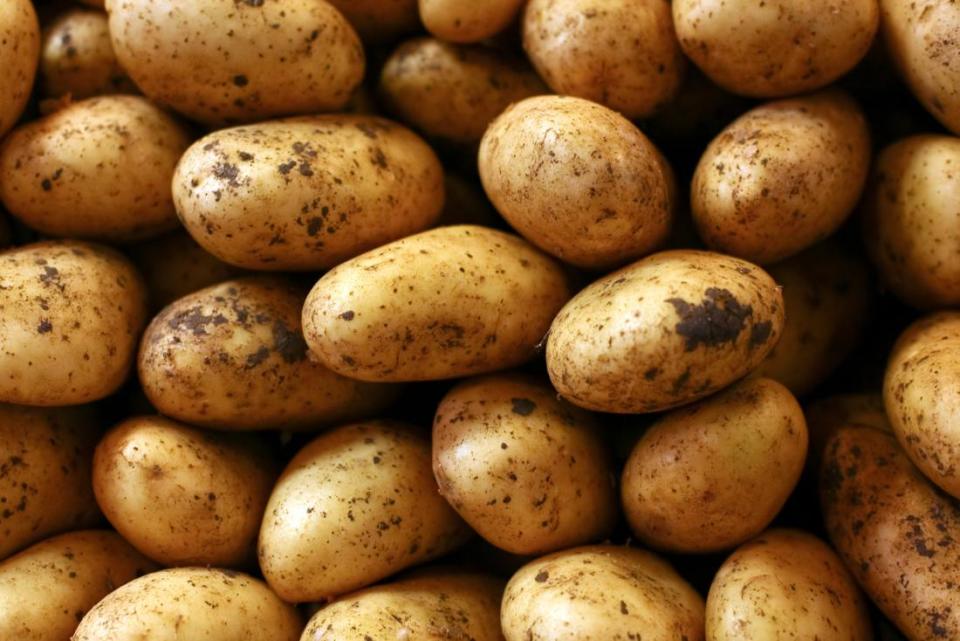Idaho comes to Texas: Yes, we can grow potatoes here
Here we are in West Texas, the land of extremes in geography and temperatures, and we can grow potatoes.
Mostly because potatoes aren’t too fussy as to their medium. They grow wherever they are planted if the soil is loose up to a foot deep for its roots to grow and the potatoes to form. But they do require tender loving care.
The best care is to plant them in the spring several weeks before the final frost, or in the fall, when the temperatures are cooler at night and the plants don’t burn up during the day. Ideal temperatures are below 85 degrees. The goal is to keep the green leaves alive and healthy so the plant can produce the roots/tubers in the ground.

Select the potato garden site
Find a spot that will keep the potatoes in 6 to 8 hours of sunshine during the day, and where you can give them loose, well-drained soil. They will be compromised by clammy or hard soil.
Large pots or bags can be used, too.
Prepare the soil
Since potatoes grow best in healthy soils that are loose and full of organic material, prepare your soil ahead of time, whether in the garden site, or in your chosen containers (which must have drainage holes).
Remove any rocks and sticks from the soil. In the garden, till the soil to about 8 inches deep, or turn over and loosen the soil with a spade. Then work the soil into beds about 12 inches high and 36 inches apart, either in rows or plots or in raised beds. Level the tops of the hills or rows. If using grow bags or pots, purchase or prepare a compost mix.
Select the type of potato you want to eat
The best type of potato to grow in West Texas is the Irish variety, either white or red.
The white variety has a better flavor when prepared and the red ones store longer after harvest. A roasting potato also can be grown here, but the size of the potato probably will be smaller than the large Idaho Russets.
Start with seed potatoes found at a garden center, or cut potato chunks from a potato that are larger than the size of a chicken egg, with at least 2-3 “eyes” in each chunk. The eyes are where the potatoes grow their stems. A few days before the day you would like to plant, “cure” the seed potatoes or chunks by leaving in a warm place or in full sun. This will help prevent rot.
Plant the seed potatoes
Place the seed potatoes eyes up in a shallow trench a few inches below the surface of the level rows or in the top of the raised bed, 1 seed potato every 18-24 inches, or 2-3 seed potatoes in each grow bag (which is only filled about 5 inches full of loose soil to start). Sprinkle 2 tablespoons of granular fertilizer between each seed. Then cover with about 4 inches of soil and water well with a sprayer.
Wait and watch
Make sure to "hill up" (add more soil), and water as necessary.
When the potatoes grow to about 6-8 inches above the soil surface, add more soil, or organic matter such as fine mulch, around the seedling so only the tops stick out of the ground. This forces new tubers/roots and new potatoes to grow under the new amount of soil.
A small amount of fertilizer can be added once the plants reach 6 inches in height. The hilling can be done several times, to make as tall a hill as you would like (make use of bricks or chicken wire to keep the hills from eroding much), or until the plants produce flowers. Then stop adding to the hill. The potato tubers will be bulking up underground. Allow rains to water the potatoes, or water about an inch of water a week, and twice a week after the flowers form.
It’s harvest time
After about 50 days, or so, some of the potatoes will be ready. Or wait until the potato plants start to turn yellow, then it’s time to stop watering so much, and time to check on the new potatoes. You can harvest a meal of the ones of the size you would like.
The potatoes can be left in the ground for several weeks until the tops have died back entirely. They should not be watered at all during this time. To harvest, use a garden fork or shovel to dig wide and deep around the plants. Loosen the soil to discover the tasty treasures.
If you have any gardening questions, you can call the Taylor County Extension Office at 325-672-6048 or email us at mgardeners@yahoo.com. We will do our best to respond to your questions. And as always, we hope that you will like our Facebook page at https://www.facebook.com/bigcountrymastergardeners. And visit the Big Country Master Gardeners at www.bcmgtx.org for information and future events!
This article originally appeared on Abilene Reporter-News: Idaho comes to Texas: Yes, we can grow potatoes here

